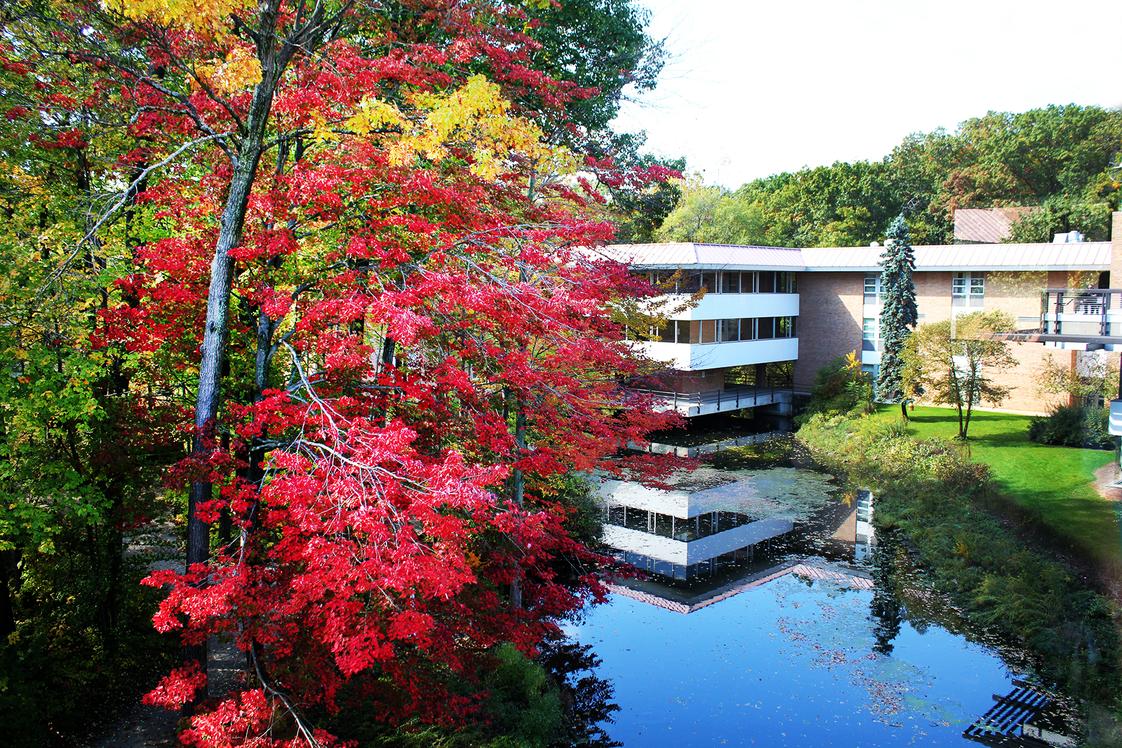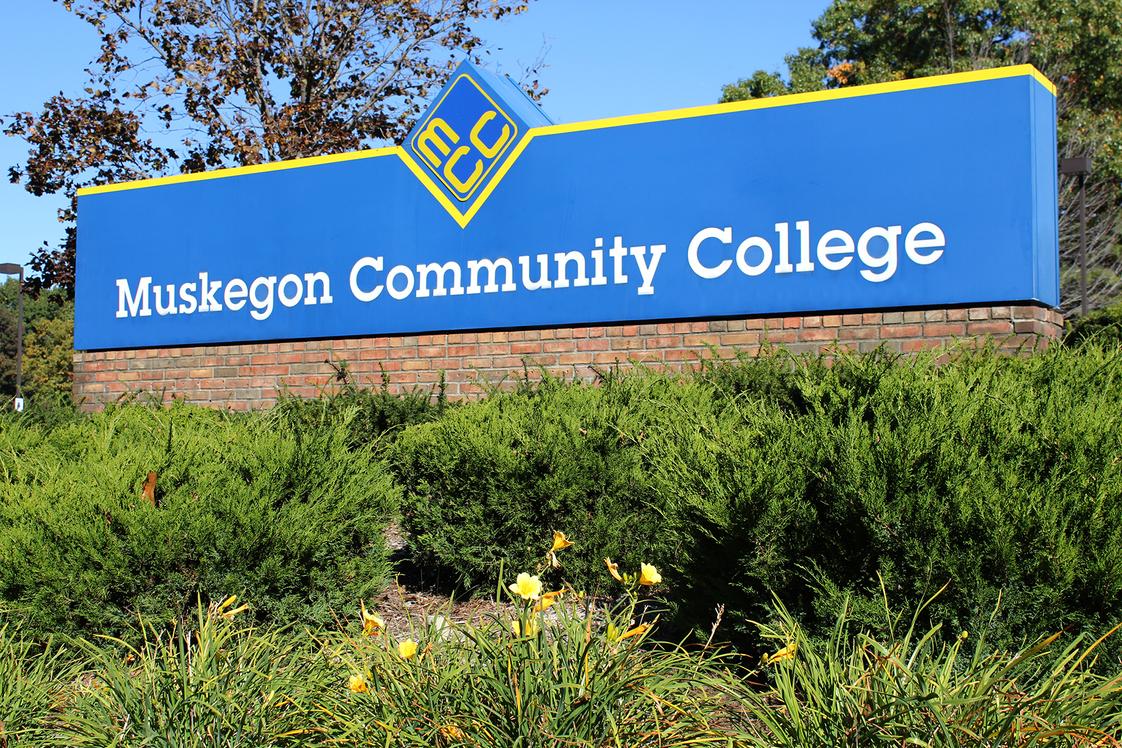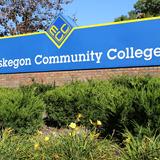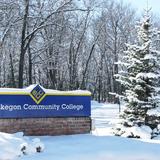- Muskegon Community College, an associate degree-granting institution of higher education, is a center for lifelong learning which provides persons the opportunity to attain their educational goals by offering programs that respond to individual, community, and global needs.
School Highlights
Muskegon Community College serves 5,144 students (27% of students are full-time).
The college's student-teacher ratio of 18:1 is lower than the state community college average of 19:1.
Minority enrollment is 24% of the student body (majority Black and Hispanic), which is less than the state average of 40%.
Quick Facts (2025-26)
- Enrollment: 5,144 students
- In-state tuition: $5,276
- Out-state tuition: $10,946
- Student-teacher ratio: 18:1
- Minority enrollment: 24%
- Source: Verified school update
Top Rankings
Muskegon Community College ranks among the top 20% of public schools in Michigan for:
Category
Attribute
Debt For Students
School Overview
The teacher population of 282 teachers has stayed relatively flat over five years.
Muskegon Community College
(MI) Community College Avg.
Carnegie Classification
Associate's Colleges: Mixed Transfer/Career & Technical-Mixed Traditional/Nontraditional
Baccalaureate/Associate's Colleges: Associate's Dominant
Institution Level
At least 2 but less than 4 years
At least 2 but less than 4 years
Institution Control
Public
Public
Total Faculty
282 staff
224 staff
School Calendar
Student Body
The student population of Muskegon Community College has grown by 28% over five years.
The student-teacher ratio of 18:1 has increased from 12:1 over five years.
The Muskegon Community College diversity score of 0.41 is less than the state average of 0.60. The school's diversity has stayed relatively flat over five years.
Total Enrollment
5,144 students
3,006 students
Student-Teacher Ratio
18:1
19:1
# Full-Time Students
1,400 students
904 students
# Part-Time Students
3,744 students
2,102 students
# Enrollment Undergraduate
514 students
219 students
# Full-Time Undergraduate Students
1,400 students
965 students
# Full-Time Graduate Students
n/a
4 students
# Part-Time Undergraduate Students
3,744 students
2,448 students
# Part-Time Graduate Students
n/a
4 students
Total Dormitory Capacity
n/a
188 students
% American Indian/Alaskan
n/a
n/a
% Asian
1%
4%
% Hispanic
8%
7%
% Black
8%
16%
% White
76%
60%
% Hawaiian
n/a
1%
% Two or more races
4%
4%
% Non Resident races
1%
2%
% Unknown races
1%
6%
Diversity Score
0.41
0.60
College Completion Rate (Students who graduate in less than 4 years)
26%
28%
College Completion Rate (Students who graduate in 4 years or more than 4 years)
n/a
20%
Average Graduate Earnings (10 Years)
$30,100
$30,700
Tuition and Acceptance Rate
The public in-state tuition of $5,276 is less than the state average of $5,506. The in-state tuition has declined by 50% over four years.
The public out-state tuition of $10,946 is more than the state average of $7,381. The out-state tuition has declined by 23% over four years.
In-State Tuition Fees
$5,276
$5,506
Out-State Tuition Fees
$10,946
$7,381
Tuition Notes
% Students Receiving Some Financial Aid
64%
88%
Median Debt for Graduates
$9,384
$11,704
Median Debt for Dropouts
$4,217
$5,500
Acceptance Rate
n/a
100%
Sports
Total Sports Offered
10 sports
Sports
BaseballBasketball
BowlingCross Country
GolfSoccer
SoftballTrack and Field
VolleyballWrestling
Extracurriculars
Total ExtracurricularsTotal Extra-curric.
28 extracurriculars
ExtracurricularsExtra-curric.
Club or Organization:
Arts and Music Programs:
Agriculture/Garden ClubAmateur Film Club
American Foundry SocietyAnime and Asian Culture Club
Business Professionals of AmericaChristian Fellowship Club
Gaming ClubGender and Sexuality Alliance
Geology ClubHealth Pre-Professional Club
Motorsports ClubNature Club
Philosophy ClubPower of Unity Alliance
Social Science AssociationStudent Government Association
Student Nurse ClubStudent Veterans Organization
Teachers of Tomorrow Students
Arts and Music Programs:
Art and DesignCollege Singers
CollegiatesDance
MCC Honors OrchestraMCC Jazz Ensemble
MCC Wind EnsembleTheater
West Michigan WINDS
Source: 2024 (or latest year available) Integrated Postsecondary Education Data System (IPEDS) , School Administrators
School Notes
- School Mascot: Jayhawk
- Muskegon Community College is a publicly supported educational institution currently serving nearly 5,000 students. Created by the Muskegon Board of Education in 1926, and housed in the then-new Muskegon Senior High School, it was one of only five two-year educational institutions in Michigan at that time. Community colleges are all about opportunity-to prepare for successful transfer to a four-year college or university-to acquire new or enhanced knowledge and skills that will advance your existing career-to earn a degree or certificate that can qualify you for a well-paying job or promotion-to complement and enrich your lifestyle with new vocational skills. Muskegon Community College, by harnessing the power of modern technology, underscores its commitment to providing West Michigan with an outstanding educational environment. Muskegon Community College, designed by Alden B. Dow, features an enclosed court, with Four-Mile Creek flowing under the wings of the building and through the court. The 111-acre campus is made up of the Academic Complex, the Technology Building, the Hendrik Meijer Information Technology Center, the Bartels-Rode Gymnasium, and the Frauenthal Foundation Fine Arts Center. Newly opened in January 2006, the Hendrik Meijer Library Information Technology Center offers students and the community the latest in communication capabilities, including wireless Internet access, state-of-the-art library facilities/technologies and classrooms, and an Internet caf. The 40,000 square foot facility has three levels overlooking the woods and creek, and offers special services including interlibrary loan, photocopy machines, group study rooms, a quiet reading room, a workstation for visually impaired persons, and both group and individual orientations.
Frequently Asked Questions
How much does Muskegon Community College cost?
Muskegon Community College's tuition is approximately $5,276 for In-State students and $10,946 for Out-State students.
What sports does Muskegon Community College offer?
Muskegon Community College offers 10 interscholastic sports: Baseball, Basketball, Bowling, Cross Country, Golf, Soccer, Softball, Track and Field, Volleyball and Wrestling.
What is Muskegon Community College's ranking?
Muskegon Community College ranks among the top 20% of community college in Michigan for: Least debt for graduating students.
Recent Articles

The Rise of Technical and Vocational Training in 2025
Explore the 2025 surge in technical and vocational training—enrollment, policy, costs, and why this path is gaining ground for students and parents.

Stackable Credentials: How Community Colleges Advance Careers
Discover how community colleges use stackable credentials to build career pathways, boost earnings, and enable lifelong learning in 2025.

High-Paying Jobs You Can Get with a Community College Degree
Discover top high-paying careers you can launch in 2025 with a community college (associate) degree and high-growth credentials in tech, healthcare and trades.



















